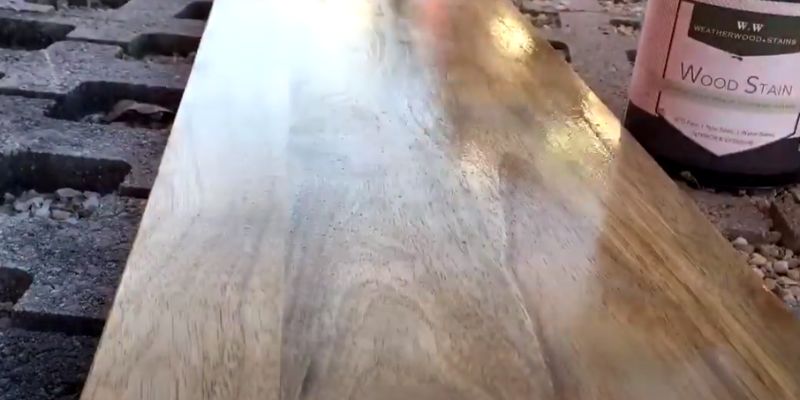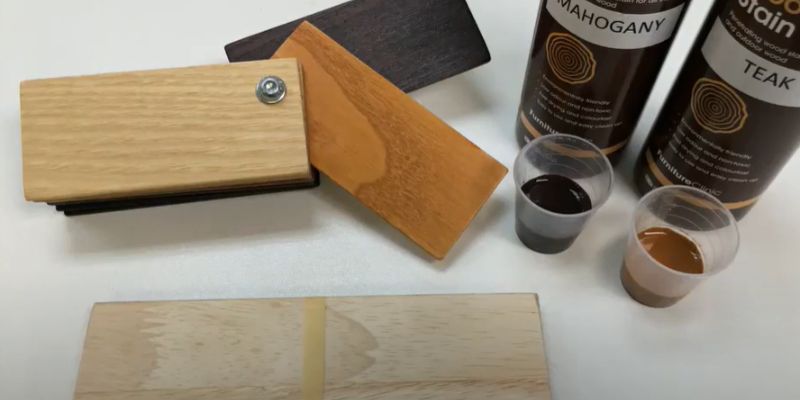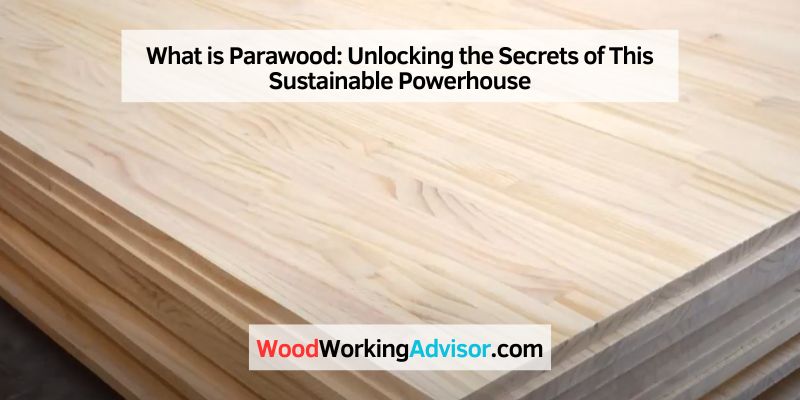Parawood, also known as rubberwood, is a durable and eco-friendly type of wood commonly used in furniture manufacturing. It is obtained from Hevea brasiliensis trees, primarily cultivated for latex production.
Parawood is known for its light color, smooth texture, and resistance to warping, making it an ideal choice for furniture production. Additionally, it is considered environmentally friendly as it comes from sustainable plantations and is often used as an alternative to more expensive hardwoods.
With its strong and versatile characteristics, parawood has become a popular choice in the furniture industry for its affordability and durability.
The Origins Of Parawood
Parawood, also known as rubberwood, is a type of hardwood that comes from the Pará rubber tree, scientifically known as Hevea brasiliensis. This tree is native to Southeast Asia and is primarily grown in countries such as Thailand, Malaysia, Indonesia, and Vietnam. Known for its sustainable harvesting practices and environmental benefits, para wood has gained popularity in the furniture industry. Let’s take a closer look at the Southeast Asian origins and sustainable harvesting practices of parawood.
Southeast Asian Origins
Parawood is deeply rooted in the heart of Southeast Asia. The region’s tropical climate, abundant rainfall, and rich soil provide the ideal conditions for the growth and cultivation of the Pará rubber tree. Thailand stands out as the leading producer of para wood, renowned for its quality and durability. The climate and geography of Southeast Asia contribute to the exceptional strength and stability of para wood, making it a sought-after material for furniture and other wood-based products.
Sustainable Harvesting Practices
One of the key factors that sets Parawood apart is its sustainable harvesting practices. Unlike other types of hardwood, which are often sourced from deforestation and unsustainable logging practices, para wood is derived from rubber tree plantations. These plantations are grown specifically for the purpose of producing latex, the primary raw material extracted from the trees for rubber production.
When rubber trees reach the end of their latex-producing life cycle, which typically lasts around 25 to 30 years, they are harvested for their wood. This process ensures that no trees are cut down solely for their timber, making parawood an environmentally friendly choice. By utilizing rubberwood as a sustainable resource, the furniture industry can support the conservation of forests and reduce the demand for illegal logging.
Furthermore, the sustainability of parawood extends beyond its origins. It exhibits excellent regenerative properties, as new trees are replanted to replace those that have been harvested. This practice allows for the continuous production of para wood, promoting a renewable and responsible approach to the use of natural resources.
In addition to its eco-friendly characteristics, para wood offers numerous advantages as a material. Its tight grain pattern, straight texture, and light color make it versatile and adaptable to various furniture styles. It is resistant to cracking and warping, ensuring the longevity of furniture crafted from it.
Parawood’s sustainable origins and harvesting practices make it a popular choice for environmentally conscious individuals. By opting for para wood furniture, consumers can not only enjoy the beauty and durability of this hardwood but also contribute to the preservation of our planet’s forests.

Characteristics Of Parawood
Parawood, also known as rubberwood, is an eco-friendly and sustainable hardwood derived from the rubber tree. It has a dense grain that makes it sturdy and durable, making it an excellent choice for furniture and flooring. With its light color and ability to be easily stained, Parawood is a versatile and cost-effective option for various interior design projects.
Color And Grain Patterns
Parawood, also known as rubberwood, is a beautiful hardwood with distinctive color and grain patterns. Its color can vary from pale cream to light golden brown, creating a warm and inviting appearance in any space.
The grain patterns of Parawood are often straight, though it can also exhibit interlocking or wavy grain patterns. These unique grain patterns add depth and character to furniture pieces made from Parawood.
Durability And Strength
Parawood is highly regarded for its durability and strength, making it an excellent choice for furniture and woodworking projects. Its dense grain structure and high density contribute to its remarkable strength, allowing it to withstand the test of time with minimal wear and tear.
Due to its durability, Parawood is resistant to warping, splitting, and cracking, ensuring that furniture made from it remains structurally sound for years to come. Its strength also enables it to hold up well under heavy use, making it suitable for busy households or commercial settings.
Summary:
- Parawood exhibits a range of colors from pale cream to light golden brown.
- Grain patterns can be straight, interlocking, or wavy, adding visual interest.
- Parawood is highly durable and strong, with a dense grain structure.
- Resistant to warping, splitting, and cracking, ensuring longevity.
- Capable of withstanding heavy use, making it suitable for various settings.
Benefits Of Parawood
Parawood, also known as rubberwood, is a sustainable and versatile option for various applications. Its unique qualities make it a desirable choice for eco-conscious consumers and furniture manufacturers.
Environmental Sustainability
Parawood is an eco-friendly option as it is sourced from rubber trees, which have reached the end of their latex-producing cycle. By utilizing this wood, it reduces the need to cut down valuable rainforest trees, contributing to forest preservation. The cultivation of rubber trees also helps in carbon sequestration, making it a sustainable choice for furniture and flooring materials.
Versatility In Applications
Parawood is incredibly versatile and suitable for a wide range of applications including furniture, flooring, and decorative items. Its consistent grain and natural color make it an ideal material for various aesthetic preferences. It can be stained, painted, or varnished to achieve different looks, providing flexibility in design.
Challenges And Controversies
Parawood, also known as rubberwood, is a versatile and sustainable wood commonly used in furniture manufacturing. However, it is not without its challenges and controversies. In this section, we will explore two key aspects that have sparked discussions within the industry: certification and traceability, as well as market misconceptions.
Certification And Traceability
Ensuring the sustainability of para-wood production is crucial, and that’s where certification and traceability come into play. Certifications such as the Forest Stewardship Council (FSC) and Programme for the Endorsement of Forest Certification (PEFC) provide reassurance that the wood used comes from responsibly managed forests.
Traceability is the process of accurately tracking the origin and journey of the wood, from the forest to the end product. It helps validate the credibility of sustainability claims and ensures that the wood has not been harvested illegally or from protected areas. Implementing effective traceability systems can be challenging, especially for complex supply chains and global markets.
Market Misconceptions
Parawood has faced its fair share of misconceptions in the market, which have created controversies and confusion among consumers. It’s essential to address and debunk these misconceptions to promote accurate information and facilitate informed buying decisions.
Some common market misconceptions include:
- Low Quality: The misconception that para wood is of inferior quality, perhaps due to its association with rubber tree plantations. However, para wood actually possesses desirable properties such as strength and durability, making it suitable for furniture production.
- Lack of Longevity: Another misconception is that parawood furniture does not last long. This is far from the truth, as proper care and maintenance can ensure the longevity of parawood furniture, just like any other quality wood.
- Environmental Impact: Parawood is often mistakenly believed to contribute to deforestation. In reality, it is a byproduct of the latex industry and gives value to trees that would otherwise be discarded. When sourced responsibly, parawood is an environmentally friendly choice.
Future Outlook For Parawood
Parawood, also known as rubberwood, is a versatile and sustainable material widely used in furniture production. With its durable nature and attractive grain, para wood is gaining popularity in the market and offers a promising future for eco-friendly furniture solutions.
Innovation In Processing Techniques
As the demand for sustainable and eco-friendly materials continues to rise, the future outlook for Parawood looks promising. One key factor contributing to its growth is the innovation in processing techniques. Manufacturers are constantly exploring new ways to maximize the usage of Parawood and minimize waste. They are implementing advanced technologies and equipment to improve the quality and efficiency of processing. By adopting these innovative techniques, Parawood can be transformed into various products with enhanced durability and aesthetics.
Many companies are investing in research and development to find alternative uses for Parawood and create value-added products. The development of engineered Parawood flooring is a great example of this innovation. By combining Parawood with other materials, manufacturers are able to create flooring with improved stability, moisture resistance, and longevity. These advancements in processing techniques not only extend the lifespan of Parawood products but also open up new markets and opportunities for the industry.
Global Awareness And Adoption
Another reason for the bright future outlook for Parawood is the increasing global awareness and adoption of sustainable materials. With growing concerns about deforestation and environmental degradation, consumers are becoming more conscious of the products they purchase. Parawood, being a sustainable and renewable resource, aligns perfectly with this growing demand for eco-friendly alternatives.
Countries across the globe are recognizing the importance of sustainable forestry and are implementing policies to ensure responsible production and consumption of wood products. This has led to an increase in the popularity and availability of Parawood in international markets. As more consumers become aware of the benefits and versatility of Parawood, its demand is expected to grow significantly in the coming years.
The adoption of Parawood as a preferred choice in various industries, including furniture, construction, and interior design, further strengthens its future outlook. Its durability, strength, and attractive grain make it an ideal material for a wide range of applications. From solid wood furniture to decorative panels, Parawood offers endless possibilities for creative designs.
In conclusion, the future outlook for Parawood appears promising due to the innovation in processing techniques and the global awareness and adoption of sustainable materials. With continued advancements, Parawood can play an essential role in reducing the environmental impact of the wood industry while providing high-quality products to meet the evolving needs of consumers worldwide.

Frequently Asked Questions On What Is Parawood
Is Rubberwood Good Quality?
Rubberwood is a good quality material. It is durable, affordable, and eco-friendly. It is commonly used in furniture manufacturing due to its strength and resistance to warping.
What Is Parawood Similar To?
Parawood is similar to teak and oak due to its durability and strength. It shares the qualities of hardwoods.
How Does Parawood Stain?
Parawood stains easily due to its open-grain structure. It absorbs stains effectively and evenly, resulting in a smooth and rich appearance. Its natural color also enhances the stain colors, allowing for a wide range of options. With proper preparation and application, para wood can be stained to achieve various desired finishes.
Is Rubberwood The Same As Parawood?
Rubberwood and Parawood are not the same. Rubberwood comes from rubber trees, while Parawood is derived from the Pará rubber tree.
Conclusion
Parawood offers a sustainable and durable option for furniture and flooring. Its eco-friendly nature makes it an appealing choice for environmentally conscious consumers. With its attractive grain patterns and ability to take on various finishes, parawood provides both aesthetic and practical benefits for your home.
Consider Parawood for your next design project.


